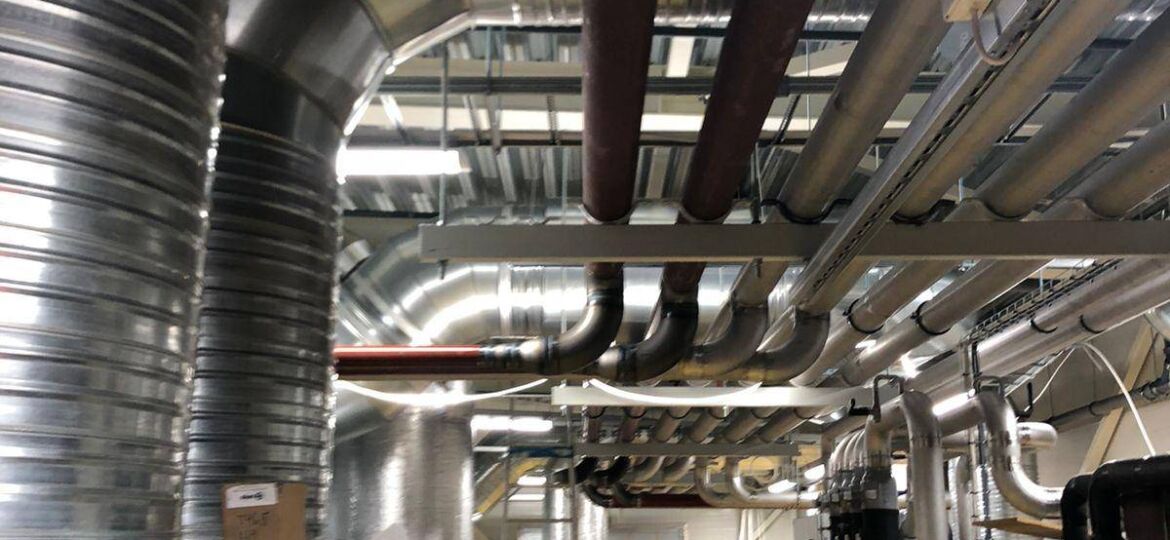When it comes to ventilation systems, various methods and systems are available to cater to different environments and applications.
In this section, we will explore the two primary types of ventilation systems: natural ventilation and mechanical ventilation. We will also delve into specific systems designed for domestic, commercial, and industrial settings, highlighting their benefits and considerations.
2.1 Natural Ventilation:
Natural ventilation utilizes natural forces such as wind pressure and buoyancy to facilitate the exchange of indoor and outdoor air. It relies on openings such as windows, doors, vents, and chimneys to allow air to enter and exit the building. Here are a few types of natural ventilation systems:
a) Windows and Doors: The simplest form of natural ventilation, opening windows and doors allows for the movement of air and can be effective in mild weather conditions. However, it provides limited control over air distribution and may not be suitable for areas with high pollution levels or extreme climates.
b) Stack Ventilation: This system relies on the principle of warm air rising and cool air sinking. Openings are strategically placed at different heights to facilitate the natural flow of air. As warm air escapes from the upper openings, cool air is drawn in from lower openings, promoting air circulation.
c) Wind-Driven Ventilation: Wind catchers or wind-driven ventilators are designed to capture and utilize prevailing winds to induce airflow. These systems typically have wind scoops or turbines that create a pressure difference, drawing air into the building.
2.2 Mechanical Ventilation:
Mechanical ventilation involves the use of mechanical devices such as fans, blowers, and ducts to circulate and exchange indoor air. It offers greater control and flexibility in regulating airflows and is suitable for various settings. Here are some common types of mechanical ventilation systems:
a) Exhaust Ventilation: This system works by removing stale air from indoor spaces and exhausting it to the outside. It typically includes exhaust fans installed in specific areas such as kitchens, bathrooms, and utility rooms. Exhaust ventilation is effective in removing odors, moisture, and pollutants generated within a space.
b) Supply Ventilation: In contrast to exhaust ventilation, supply ventilation brings fresh outdoor air into the building. It uses fans or blowers to introduce outdoor air, which then displaces the stale air, promoting air circulation. Supply ventilation is often combined with exhaust ventilation to create a balanced system.
c) Balanced Ventilation: Balanced ventilation systems combine both exhaust and supply ventilation to achieve a balanced airflow. They provide a controlled exchange of indoor and outdoor air, ensuring that an equal amount of air is exhausted and supplied. This helps maintain pressure balance within the building and prevents excessive moisture buildup.
2.3 Ventilation Systems for Specific Applications:
In addition to natural and mechanical ventilation, specific ventilation systems are designed to cater to the unique requirements of different settings:
a) Domestic Ventilation Systems: These systems are tailored for residential buildings and focus on maintaining a healthy indoor environment. They may include mechanical extract fans for bathrooms and kitchens, whole-house mechanical ventilation systems with heat recovery, or decentralized ventilation units for individual rooms.
b) Commercial Ventilation Systems: Commercial buildings often require more complex ventilation systems due to larger occupancy and diverse spaces. Systems may include centralized air handling units, variable air volume (VAV) systems, or demand-controlled ventilation (DCV) systems that adjust airflow based on occupancy levels.
c) Industrial Ventilation Systems: Industrial facilities require specialized ventilation systems to control air quality, remove contaminants, and ensure worker safety. Systems may include local exhaust ventilation (LEV) systems, which capture and remove pollutants at the source, or high-volume low-speed (HVLS) fans for large spaces to promote air movement.
Choosing the right type of ventilation system is crucial for achieving optimal indoor air quality and comfort. Whether it’s natural ventilation harnessing natural forces or mechanical ventilation providing controlled airflow, each system has its benefits and considerations. Understanding the specific requirements of domestic, commercial, and industrial settings helps in selecting the appropriate ventilation system that meets the unique needs of each application.

